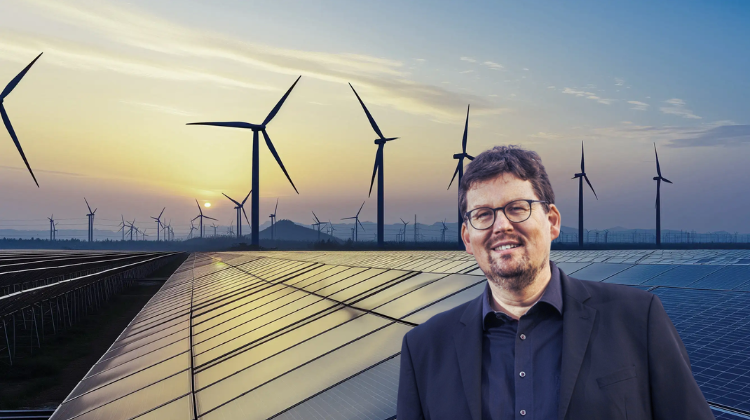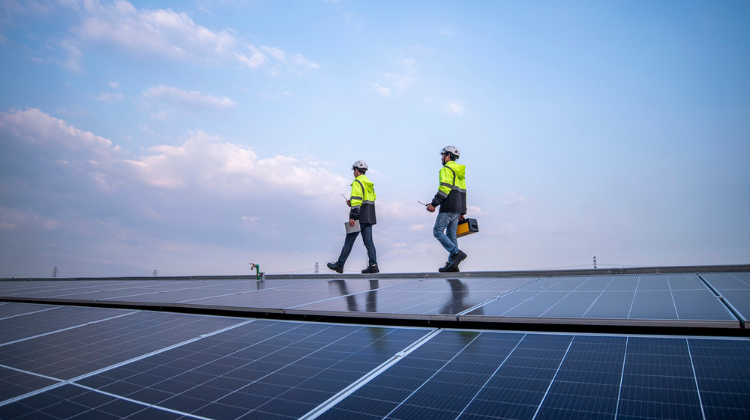The European Commission took a significant step in its climate strategy by adopting four new legislative acts and an official communication under the Net-Zero Industry Act (NZIA). These measures aim to boost clean technology production, streamline permitting processes, and identify key strategic projects in Europe’s green transition.
However, the European solar manufacturing industry argues that these measures are not enough. “You cannot overstate the urgency. Decisions must be taken now,” states Christoph Podewils, Secretary General of the European Solar Manufacturing Council (ESMC), in conversation with Strategic Energy Europe.
ESMC’s warning: Europe’s solar industry cannot wait
“Companies that are still operating in Europe today do not have time. They have 6-12 months to see if there will be a viable market for them,” Podewils warns, stressing that the lack of binding instruments leaves manufacturers without clear direction. While the new NZIA provisions recognise the importance of the solar value chain, Podewils says, “there is still no real market for Made in Europe solar products. It is all up to the member states to create such a market, which the provisions absolutely allow for.”
NZIA’s Article 26 mandates that 30% (or 6 GW) of renewable auction volumes in each Member State must target resilience and sustainability criteria. But implementation is left to national authorities. “The Act includes no explicit requirement for European-made products but offers several filters that could exclude non-EU technologies—if Member States choose to apply them,” he explains.
Regulatory filters: useful tools, but lacking binding strength
The available criteria include environmental, social, and governance standards. “If strict international labour and sustainability standards are applied, countries like Vietnam, India, or Malaysia might be excluded,” says Podewils.
Additionally, Article 12 introduces a voluntary criterion on efficient water use in solar panel production. If applied in auctions as a pre-qualification criterion, this could further limit eligibility to only a few compliant countries or manufacturers.
Chinese overcapacity and dumping: a structural threat
A central concern is China’s dominance in the photovoltaic market. “Chinese modules in Europe are often sold at prices lower than in China itself. This qualifies as dumping,” Podewils affirms. This price pressure not only affects European firms but also raises concerns about product quality, as even Chinese companies feel the cost squeeze.
“Those who buy cheap often buy twice. That might be what happens with low-quality solar panels in Europe,” he warns.
The U.S. moves forward with subsidies, while Europe stalls
Unlike the EU, the United States has enacted the Inflation Reduction Act (IRA), providing direct subsidies and tax credits to domestic solar manufacturers. Similar instruments do exist in India. “There’s nothing comparable in Europe. We don’t even have tools to level the playing field with China,” Podewils points out.
Even worse, European companies pay tariffs on importing solar components, while fully assembled Chinese modules enter duty-free, creating a double disadvantage for local manufacturing.
Public procurement: the most realistic lever to stimulate demand
Podewils sees a way forward through public procurement. “If Made in Europe requirements are introduced in public tenders, we’d have a visible and reliable market,” he argues.
One key policy here is Article 10 of the Energy Performance of Buildings Directive, which requires solar to be installed on nearly all public buildings across the EU by 2030. “This segment alone could absorb a high double-digit gigawatt volume per year. If reserved for EU-made modules, it could change the outlook entirely,” he asserts.
A last chance for Europe’s solar manufacturing base
Although promising industrial projects are progressing in France and elsewhere, companies are holding back final investment decisions due to a lack of clear regulation. “If we don’t see concrete measures which level the playing field and clear rules for public procurement, more firms will shut down or shift their focus elsewhere,” Podewils warns.
The message is direct: Europe must act now if it wants to retain a strategic solar manufacturing industry in the coming decade.































